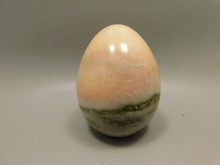Previously we talked about the study of the first 2 types of rocks-sedimentary and igneous.
You can read them here- Sedimentary Rocks or Igneous Rocks.
The third type of rock is Metamorphic Rock. Metamorphic rocks are other rocks that were changed by heat, pressure, and/or chemical processes. Usually, these processes occur deep below Earth’s surface. The process of, called metamorphosis, actually changes their mineralogy and texture.
The two main types of metamorphic rocks are foliated and non-foliated. Foliated metamorphic rocks have a layered or banded appearance, that are produced by exposure to heat and directed pressure (slate, schist, and gneiss). Non-foliated metamorphic rocks do not have a layered or banded appearance (marble, quartzite, and hornfels).
Regional metamorphic rocks occur over a large area due to the action of heat and pressure caused by the movement of tectonic plates. Contact metamorphic rocks have been subjected to contact metamorphism, which occurs when a rock is in contact with a body of molten magma. The heat from the magma can cause the rock to undergo changes in its mineralogy and texture. And Hydrothermal metamorphic rocks have been subjected to hydrothermal metamorphism, which occurs when hot, chemically active fluids flow through the rock and alter its minerals.
The study of metamorphic rock is called Metamorphic Petrology. Studies of metamorphic rock involve consideration of rock chemistry, thermodynamics, and phase diagrams. Their main goal is to develop and apply reliable methods to investigate the composition, structure, and origin of metamorphic rocks, as well as the processes that form that, to better understand the history of the Earth formation. They do this using theory, experiments, laboratory study, and field study.
Metamorphic Petrology is an important field because it helps us understand the processes that shape the Earth’s crust and the formation of minerals and rocks. It also has practical applications in fields such as mining and petroleum exploration. Studying metamorphic rocks also provides us with information on the Earth’s tectonic plates and their movements.
Metamorphic rocks are the most common rock type on Earth, and their study allows us to learn about pressure, stress and temperature conditions in the Earth's crust and mantle, and how that affects our environment.
In conclusion, why is it so important to study the various types of rock formations?
Because the study of rocks helps us to understand the composition of the earth’s crust. The various minerals and chemical properties of the mantle are important to various professions (such as civil engineering). We also need to know about the formation and composition of the Earth’s surface.
Methods such as radiometric dating can be used to determine the time periods in which certain rock types were formed. This helps in creating a comprehensive series of geological events in the Earth's history and what might have caused changes. Also, by studying rock formations we have gained understanding of the tectonic plate processes. This information is important to be able to predict the future too, and to understand what causes and perhaps how to mitigate damage from natural disasters.
In addition, rocks are natural sources for important minerals and ores, and natural resources such as gas and oil, which are used as raw materials by many industries. Petrologists help in the discovery of new minerals hidden below the earth’s surface. The supply of such minerals is vital to ensuring sustenance and commercial viability.
Happy hunting!
 US Dollar
US Dollar
 Australian Dollar
Australian Dollar
 Euro
Euro
 CAD
CAD

